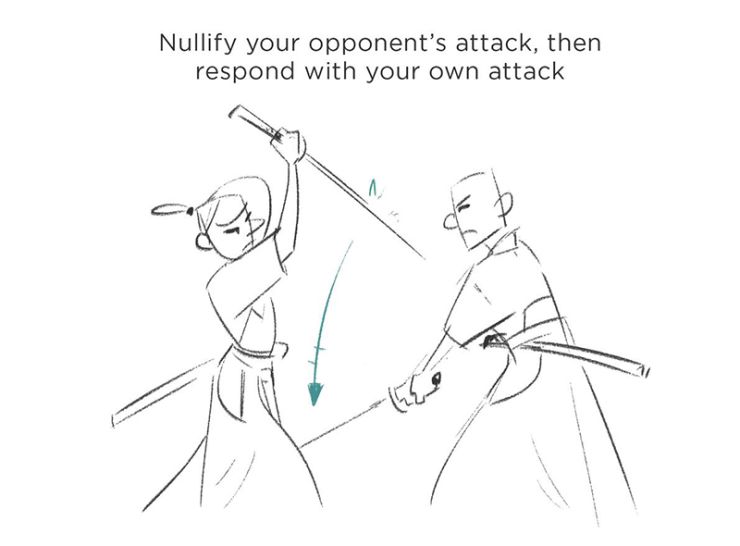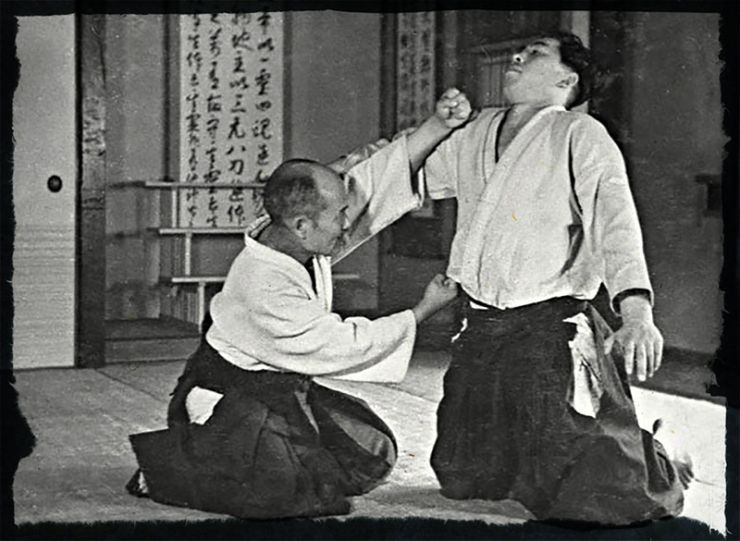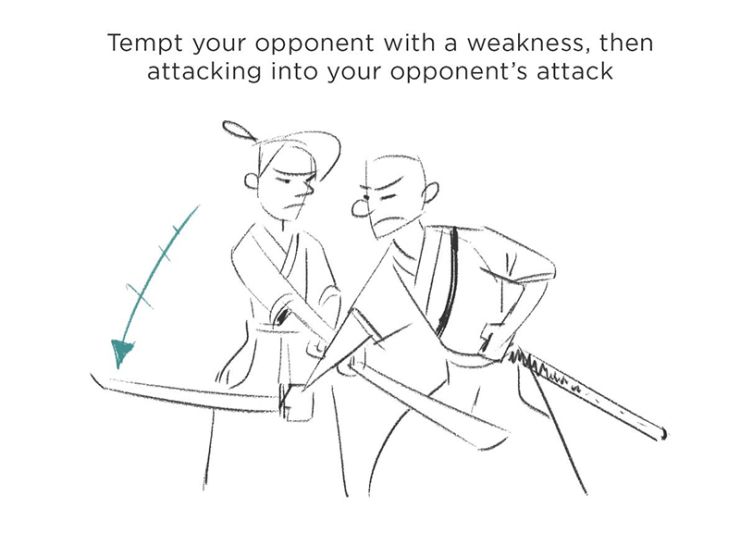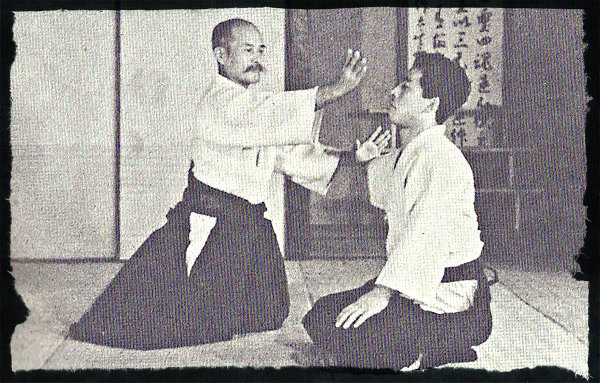Gō-no-sen 後の先 : To respond to an attack after it is initiated.
Sen-no-sen 先の先 : To anticipate an attack and to take the initiative.
Sensen-no-sen 先先の先 : To anticipate an attack before the attack.
In a martial sense, it takes years of training to be able to understand the fine line between sen-no-sen and meaning of sensen-no-sen. We learn the basics of technique by applying the gō-no-sen concept at beginner levels (low to mid-level kyu belt), and if we are good we might advance to being capable of responding sen-no-sen at 1st kyu & shodan levels. Sensen-no-sen, requires high proficiency of zanshin. If zanshin is not involved, then you either risk the possibility of not seeing the intent of attack and being hit, or you're going around punching people in the face for no reason.
Go no sen (後の先, POST-INITIATIVE)
"This strategy prescribes taking the post-initiative after letting or luring the opponent to commit to his/ her actions. In many ways, this strategy aims to use the opponents' strengths against themselves." Examples of these include:
1. Ukenagashi (Seiza waza). Once the Uchidachi has committed into the cut, the shidachi receives and uses the momentum therein to follow-up with a decisive kirioroshi.

This is not just a counter-attack. Go-no-sen is a mental state, a level of concentration assumed during combat. It is more correct to say that it is harmonization with the very movement of attack, not just defense.
One of the methods to grab energy (ki) is to wait for the opponent's move, and once it has been made, the defender leverages the energy used by the attacker, not opposing it, but rather making it go to one side or turning it back on the attacker. For this, it is necessary to capture the move at the right moment. There must be harmony between the combatants in order to capture the energy of the other. If the opponent is simply blocked or opposed, there will be only shock and loss of strength for both, but, if there is blending, the loss will be limited to the attacker.

It is interesting to note that the concept of timing is dependent on both you and the uchidachi/opponent. Having a keen observation of the nuances of timing, apart from an active mind and body, and a solid foundation of skill can help a great deal towards the application of the three states of sen.
Sen means "before". It is also a shortened form of sen-te (literally "beforehand") and typically refers to "an attack" in budo terms. Go means "after"
Sen no sen ( 先の先 Ahead Before Taking the Initiative)
"This strategy prescribes observing your imaginary opponent's intents from and countering his/her with your own initiative." Examples of these include:
-
Inazuma (Tatehiza waza). As uchidachi is cutting down, shidachi cuts into the opponent.

-
Shinobu (Okuiai waza). After deceiving the uchidachi, shidachi in an offset position cuts down before the uchidachi completes the cut.

This is not to guess the mentality of your opponent and check his action before it is done, but to start action in defense the moment you have an inkling of the offensive of your opponent. It is to avoid the opponent's attack the instant it is about to be launched upon you, and to make a counter-attack taking advantage of a pause in your opponent's movement and a disturbance in his posture. A man who takes the initiative in defense rises in opposition to his opponent's attack, and parries or averts it or applies a counter technique.
Seemingly it is a defensive move. In order to stave off the opponent's attack at the last moment and restore one's position, one must keep the moral attitude of initiative so as not to get bested by the adversary.
Sen sen no sen ( 先先の先 )
"Also called Kakari no sen". This strategy prescribes creating an advantage over your opponent by taking the initiative in advance of your opponent's actions/ intents." Examples of these include:
-
Junto (Battoho waza). As the uchidachi decides and begins to attack, the shidachi takes the initiative and attacks before the uchidachi's sword is fully drawn.

-
Zetsumyoken (Tachiuchi no kurai kata). The decisive moment in this kata is when the Uchidachi is bringing his sword up, and the shidachi exploits that gap and attacks. Sen sen no sen ( 先先の先 )

The ultimate goal of martial training is to be capable of Superior initiative. Superior initiative is given play in a delicate situation where one confronts an opponent who intends to attack and gains mastery over them by subtly guessing their mentality and forestalling their actions.
This is the highest reach of mental cultivation in any military art and is regarded as not being easily attainable.
But if you consider it more deeply, you will find it too late to try to gain command over anything when it has taken a concrete form, and you must have the mental preparedness to hold it down beforehand or at least take an action. For this purpose, it is necessary to learn to maintain an openness and serenity of mind as signified by the old expression, "Clear as a stainless mirror and calm as still water."
